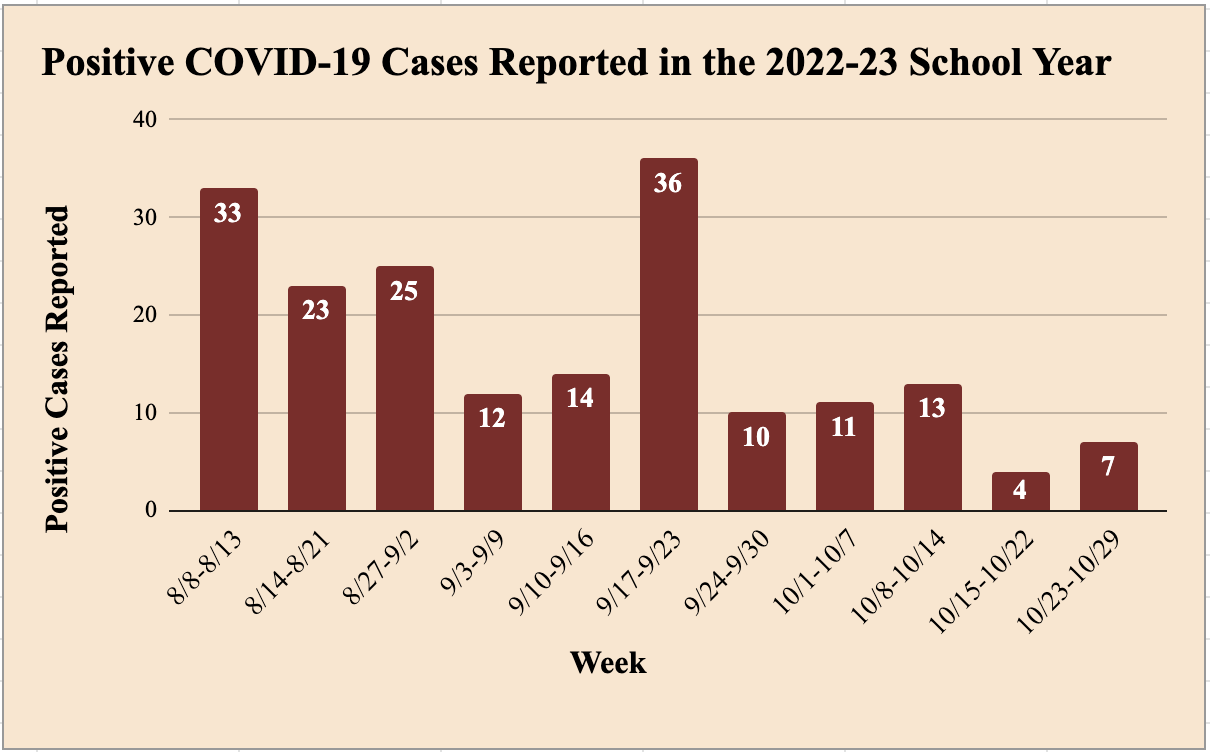COVID-19 cases have fluctuated at MHS this school year, with a peak of 36 cases from Sept. 17 to Sept. 23, according to Assistant Principal Jennifer Hutchison. Although numbers may spike around large events, the number of cases has decreased overall since the beginning of the school year and since the previous school year, she said.
Following Santa Clara County Public Health guidelines, wearing face masks on campus is strongly recommended but not required, Hutchison said. Additionally, using state funding, the school distributed COVID-19 testing kits to students every two to three weeks and provided personal protective equipment (PPE) to teachers, she added.
“If students needed test kits, they simply come to the office for them,” Hutchison said. “We also have staff members that are trained to administer COVID test kits.”
When a COVID-19 case is reported, the rooms that the infected individual was in are disinfected on the same day when possible, and the school sends information to those in social isolation, Hutchinson said.
“When a COVID case is brought to our attention, we notify the family and the students of their isolation timelines based on Santa Clara County Public Health Department’s requirements, along with a lot of other details for that isolation timeline,” Hutchison said.
While close-contact emails were sent out earlier in the year, the school has since discontinued sending these messages out to families, Hutchison said.
“There were complaints from families saying that they were being inundated from all the different school sites, and at this point, they just assume that their students are exposed,” Hutchison said. “We were doing it based on recommendations, not requirements, from the county.”
However, close-contact testing is still “strongly recommended,” with Covid Clinic testing stations on campus which are open weekdays to students, staff, and community members, Hutchison said. While testing has been compulsory for individuals such as student-athletes in the past, it is no longer a standard procedure, she added.
“The best prevention is regular testing, and test kits are much more readily available than they were last year,” Hutchison said. “We ask for you to test as often as necessary, so we don’t have a need to necessarily be testing individuals once a week to prove whether they’re carrying it or not.”
It has become easier to manage the obstacles that come with COVID-19 after having a year to adjust back to in-person learning, Director of Bands Moises Fagundes said. He believes that the school has been effectively distributing COVID-19 test kits this school year, Fagundes added.
“They have been doing a lot more take-home tests,” Fagundes said. “Obviously, we’ll probably be seeing more spikes when we do those COVID tests, but it is a good way to track positive cases and keep everyone safe.”
Junior Allyza Semana, who contracted the coronavirus during this school year, said that it was more difficult to keep up with schoolwork while in self-isolation. She was required to report her initial positive COVID-19 test to the school, and was required to test for COVID-19 again before returning to school — though she decided to stay at home for an extra two days to ensure that she had recovered fully, Semana said. She added that she believes more people should wear masks to help reduce the spread of COVID-19.
Similarly, Hutchison said that taking precautions was still important: “I really do hope, as we are coming up to these holidays, that people do keep in mind we are still dealing with COVID and to make good decisions and be safe,” Hutchison said.

